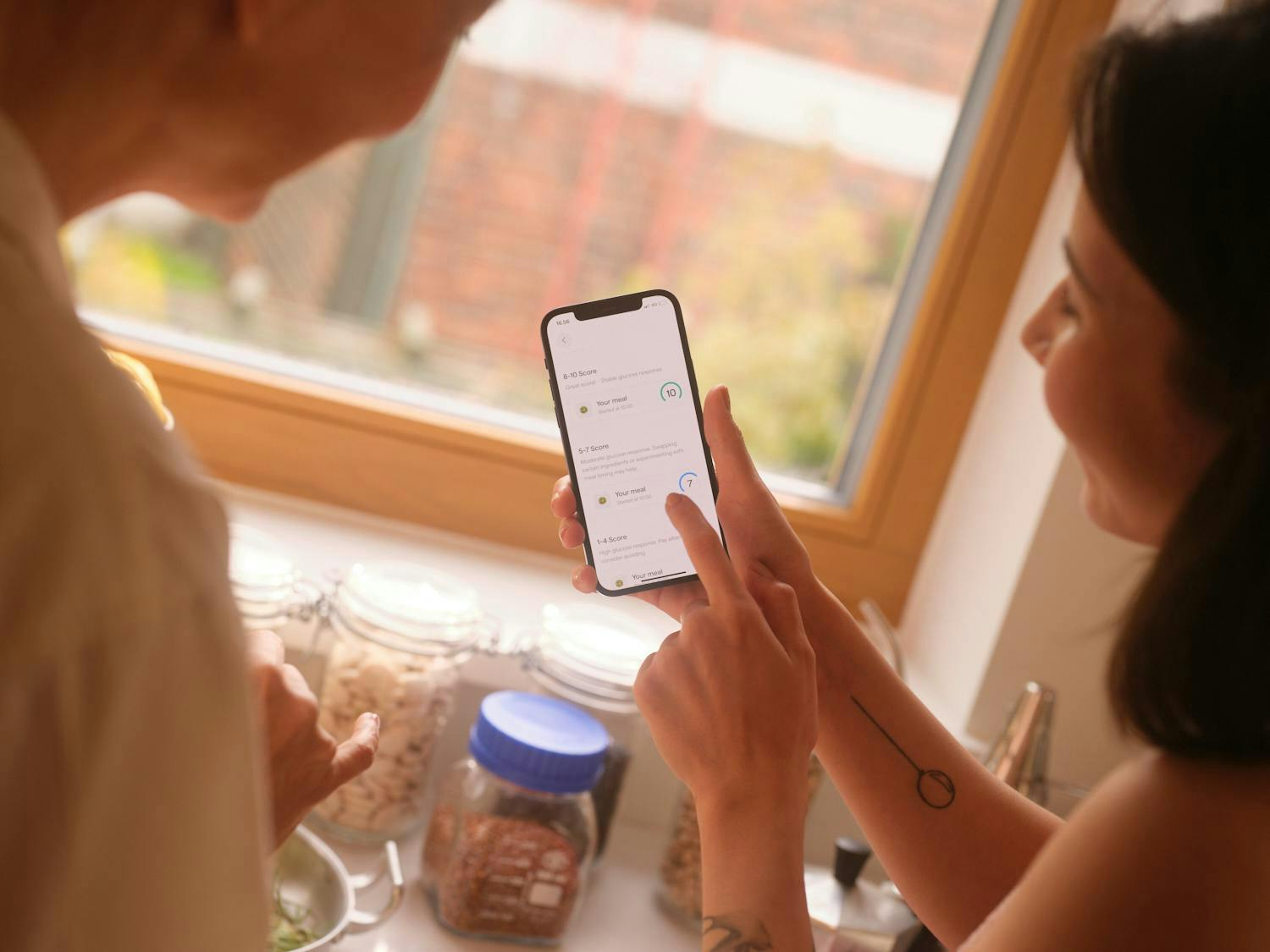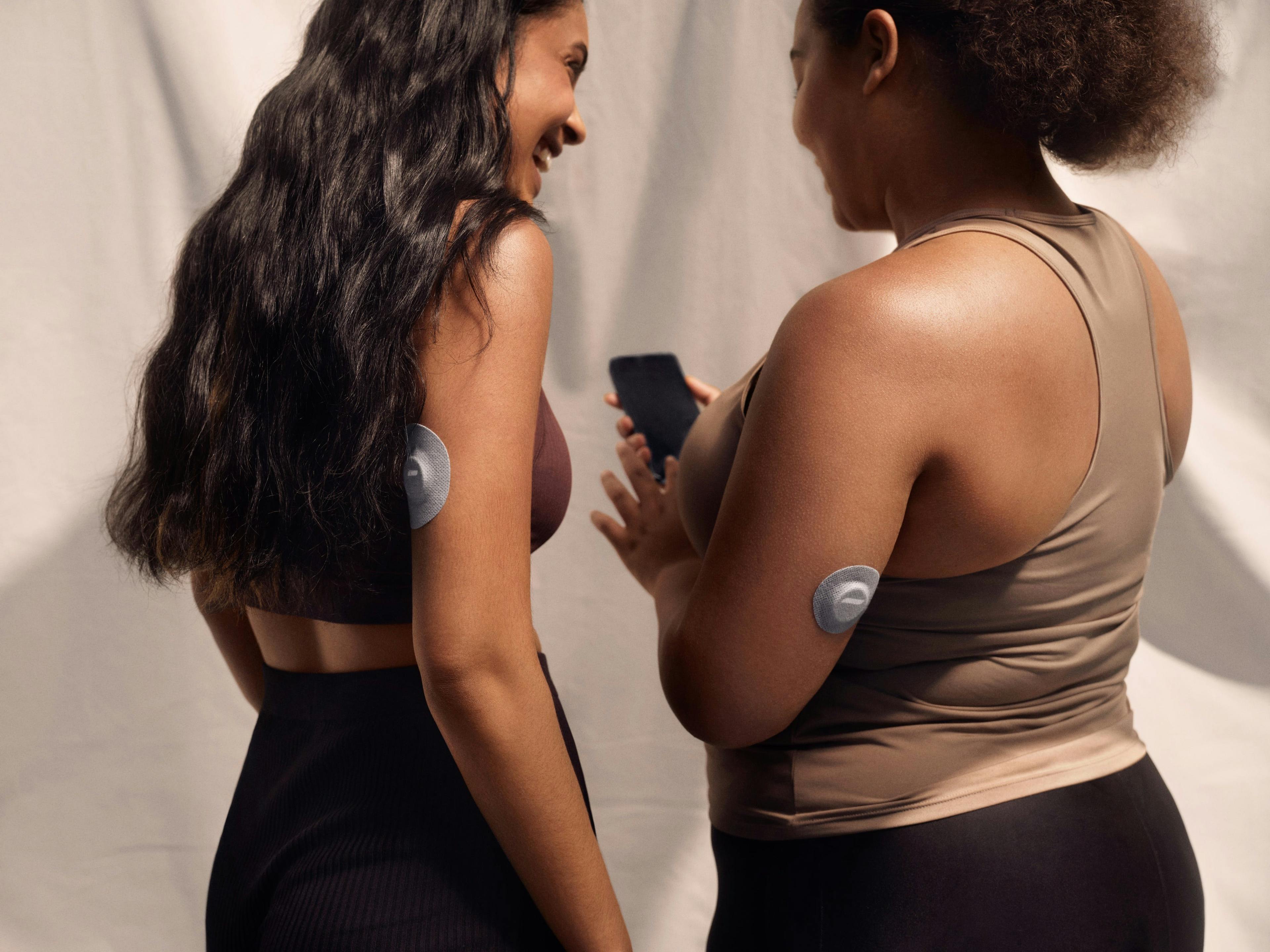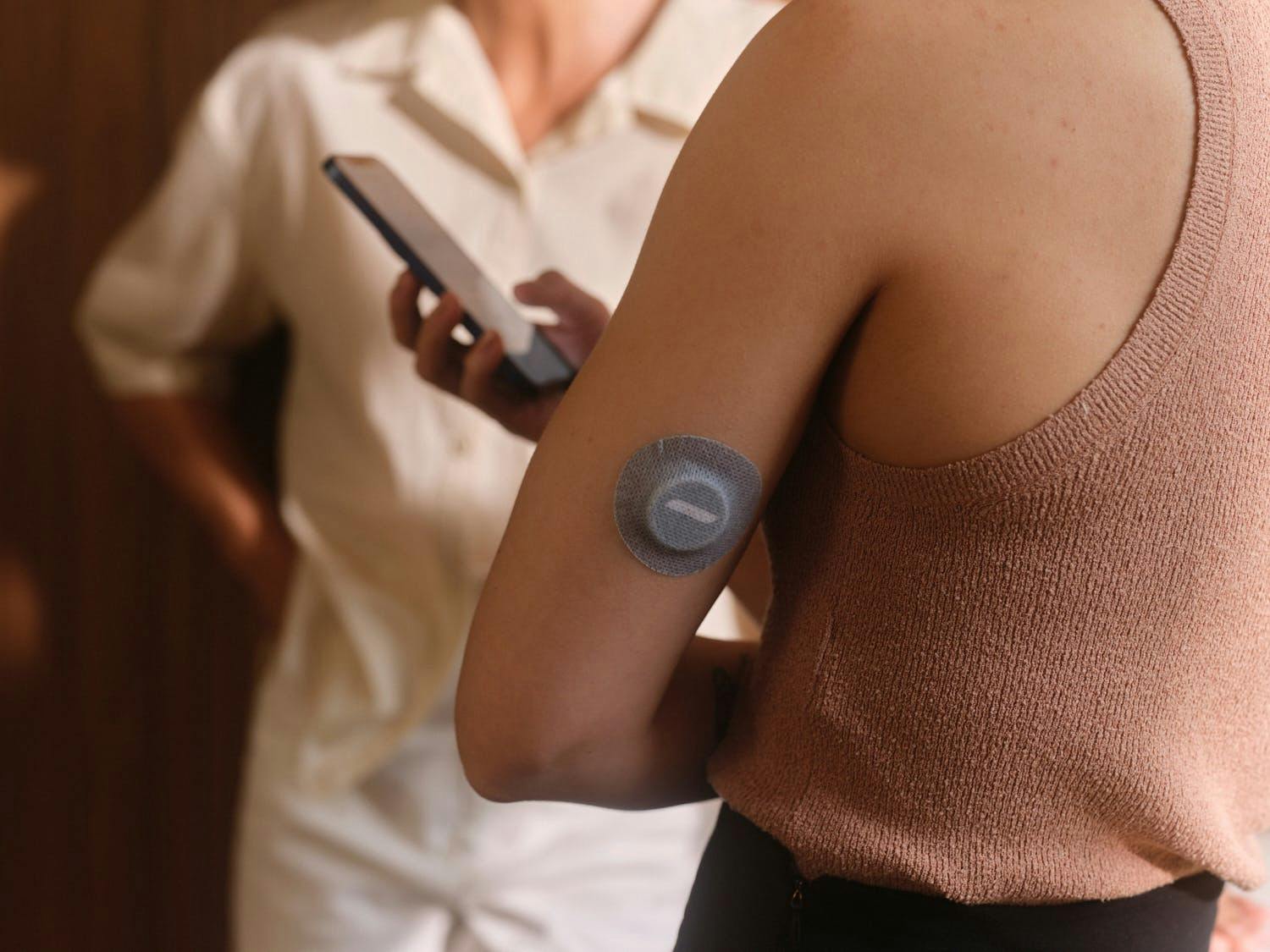Health is at our fingertips. With apps and wearables, we can track our sleep and menstrual cycles, improve our meditation, increase our fasting time, and so much more.
You may be familiar with some of the health tech and wearables out there, but one that is backed by research and helping people improve their lives is a continuous glucose monitor, better known as a CGM.
If you’re thinking, “I thought CGMs were for diabetes,” you’re right that this has been the typical use case — until recently.
New research supports the use of CGMs for people without diabetes. Studies suggest that glucose monitoring may be beneficial for identifying future risks of glucose intolerance and that often non-diabetics experience glucose fluctuations similar to people with prediabetes, which may put them at risk of metabolic issues in the future [1, 2]. Put differently, CGMs have emerged as a powerful tool for monitoring and improving your lifestyle for better health.
But before we get into the benefits — what is a CGM? And how does it work?
What is a continuous glucose monitor?
A CGM, or a continuous glucose monitor, is a small device that typically is placed on the back of your arm and measures your blood glucose levels in real-time, 24/7 — even while exercising, swimming, or showering.
Does putting on a CGM hurt?
The sensor, which sits on your skin, is attached to a small filament, which sits just below your skin and is inserted with a needle. But don’t worry — we promise it doesn’t hurt! The average Veri user rates the feeling of inserting a CGM as 1 on a pain scale of 1-10 (10 being the most painful).
Are there different kinds of CGMs?
While several different brands of CGM are available, at Veri, we use the Freestyle Libre series. We chose the Freestyle Libre series for its ease of use, accuracy, and accessibility.
There are other ways to test your blood glucose. For example, you can prick your finger and test your blood sugar levels on a small machine called a glucometer. You can also test your sugar levels by doing a blood test at a doctor’s office, where they’ll often report on your average blood glucose at that moment, or calculate your A1C. An A1C tells you your average blood sugar level for the past 3 months but still is missing a lot of crucial detail that a CGM gives you.
How does a continuous glucose monitor work?
A CGM lasts for 14 days and provides continuous glucose data throughout that time.
CGMs that use a filament fall under the category of “electrochemical glucose biosensors,” which means they use an electrochemical signal to test and communicate glucose levels.
Here’s how it works: the filament that sits under your skin is coated with an enzyme called glucose oxidase. When the glucose oxidase enzyme comes into contact with glucose in your interstitial fluid, glucose is converted to gluconic acid and hydrogen peroxide, which generates an electrical signal due to electron transfers that occur as a result of this chemical reaction [3]. This creates an electrical signal, which communicates the level of glucose molecules in the blood, giving you a reading of your blood sugar levels [4].
The sensor transmits glucose levels to your phone so you can see your levels in real-time and a graph shows how your levels fluctuate throughout the day.
What is interstitial fluid?
Interstitial fluid is the fluid surrounding your cells. Your blood cells transport glucose to all parts of the body to be used for energy. Interstitial fluid is what glucose moves through to enter the cells, so it serves as a useful, easy-to-measure proxy for blood glucose [5].
For example, when your blood glucose is rising quickly, your sensor readings may reflect a glucose level that is slightly lower than the amount of glucose in your blood, due to the lag.
The same is true of when your blood glucose is decreasing quickly — your actual blood sugar might be lower than your sensor reading because glucose in your interstitial fluid follows that of your actual blood glucose. This isn’t a cause for concern, just something to keep in mind if you’re validating blood glucose with a finger prick monitor.
What can a continuous glucose monitor show me?
A CGM is a great way to understand where you fall on the metabolic health spectrum, and what specific areas of your health habits need improving.
A CGM paired with the Veri app allows you to gain insight into the four most important habits for metabolic health: food, exercise, sleep, and stress. At Veri, we call these the four pillars of metabolic health, since they’re supported by research to be the most impactful for your longevity and healthspan.
When you start wearing a CGM, you’ll be able to clearly see which lifestyle habits are helping — or hurting — your health. For example, a positive discovery might be that your afternoon workout is improving your insulin sensitivity and keeping your blood sugars stable after dinner.
On the other hand, maybe you realize your morning bowl of oats is seriously spiking your blood sugar levels, and causing that mid-morning brain fog and fatigue you always feel at work. You can take these learnings and start to experiment with breakfasts that keep your glucose and energy levels stable.
A CGM allows you to tap into the specific needs of your body and what works best for your unique biological makeup. It allows you to break free from the prescriptive, one-size-fits-all diets and find a sustainable way to build a healthy and enjoyable lifestyle.
How do I get a continuous glucose monitor without diabetes?
In many countries, you can get a CGM without a prescription, either over the counter or shipped straight to you through Veri’s website. Veri ships to the US, the UK, and many countries throughout Europe. Check here to see if we ship to your country.
If you already get your sensors elsewhere, you can enroll in Veri’s app-only subscription, but you can always get sensors from Veri if that’s more convenient.
Do I need a prescription to get a CGM in the US?
In the US, you will need a prescription for a CGM, which can be challenging, since it is typically only prescribed to type 1 and type 2 diabetics. However, Veri makes it possible to purchase a CGM without a doctor’s visit. We’ll handle your prescription for you — all you need to do to get a CGM through Veri if you live in the U.S. is fill out a short health questionnaire and upload a photo of your ID to verify your identity.
Even if you don’t have diabetes, a CGM can elucidate areas of your health that need work, and the Veri app can guide you on how to take action toward achieving your best and healthiest life.
Key takeaways
A CGM is a powerful tool for monitoring your blood glucose levels. It provides a window into your body and gives you objective biometric data, allowing you to take meaningful and guided action toward better health. Whether your goals are to lose weight, reverse insulin resistance, extend your healthspan, or improve your overall well-being, a CGM can help.
- A CGM is a wearable device that allows you to continuously measure your blood glucose levels for 14 days at a time.
- A CGM uses a small filament to measure interstitial fluid — the liquid surrounding your cells — and serves as a proxy for blood glucose levels.
- Using a CGM gives you objective biometric data, and pairing it with the Veri app gives you the insights and guidance to create impactful health habits that improve your health in the immediate and long term.
- You can get a CGM over the counter in many countries, and Veri can help you get CGMs shipped directly to your door and without the hassle of a visit to the doctor.
References:
- https://www.diabetesresearchclinicalpractice.com/article/S0168-8227(18)30091-3/fulltext
- https://journals.plos.org/plosbiology/article?id=10.1371/journal.pbio.2005143
- https://www.ncbi.nlm.nih.gov/pmc/articles/PMC3292132
- https://www.ncbi.nlm.nih.gov/pmc/articles/PMC3663003
- https://diabetesjournals.org/care/article/26/8/2405/22733/Physiological-Differences-Between-Interstitial


